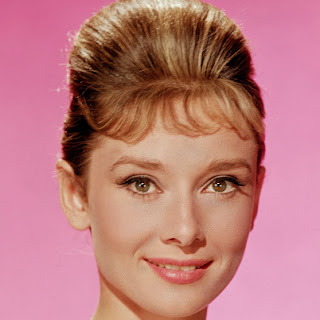She returned to England after World War II to study ballet at the Conservatory Arnhern , while also working part time as a model.
Audrey Hepburn made her entrance on stage in London in 'High Button Shoes' as a chorister and later appeared in the musical ' Tartare Sauce ' and ' Piquante Salsa' at the Cambridge Theatre in London's West End.
Audrey Hepburn rose through the ranks and was given the lead role in the 1951 Broadway production of " Gigi" . Hepburn won a Theatre World Award for his role in the production .

Audrey Hepburn Biography
Two years later , Hepburn was nominated for an Oscar for best actress for her performance in ' Roman Holiday ' (1953 ) , which starred with Gregory Peck. This performance and the nomination made her an international star .Nominations and awards continued and , in 1954 , was nominated again for Best Actress for 'Sabrina ' , co -starring Humphrey Bogart and William Holden , and received a Tony Award for Best Actress in a Drama for her performance in Broadway in ' Ondine ' .
In 1959 , for his role in ' The Nun's Story " , Hepburn was nominated again for an Oscar , as well as being awarded the New York Film Critics Circle Award and the Prize of the British Film Academy Award for Best Actress . Film tells the story of Sister Luke , who faces a struggle to overcome his doubts of faith to fulfill his dream of serving in the Congo , where he finds love - and atheist Dr. Fortunati interest .
Perhaps the most famous role of Hepburn as Holly Golightly in the iconic ' Breakfast at Tiffany's ' in 1961 , the earned another Oscar nomination . This film cemented his already considerable reputation as a style icon. Commenting on his role in the film , Hepburn said, "I 'm an introvert , playing the extroverted girl was the hardest thing I've done. " .
She became a fashion icon after appearing in the film and the use of what is perhaps the most famous little black dress in history. Hepburn also boosted the popularity of the coat , with his small figure illustrates how elegant it could be.
He followed this performance with another senior , starred in 'My Fair Lady' in 1964 as Eliza Doolittle in George Bernard Shaw based on Pygmalion ' . This earned him another Oscar nomination and a Golden Globe , as well as being the most lucrative film career . Most of the songs was really bent voiced by Marni Nixon, with Hepburn later saying that I do not take on another musical if he could not do the singing . Soundstage magazine in 1964 wrote that since " Gone with the Wind 'has a motion picture created such universal excitement as My Fair Lady' .
As a result of all these nominations, Audrey Hepburn is one of only a few artists who have won Tony Oscar , Emmy , Grammy and .
Two years later starred with Peter O'Toole in the romantic comedy " How to Steal a Million ." He told the story of Nicole , who was forced to steal a statue in a museum in Paris to divert attention from artworks forged his father . the film had an estimated $ 6 million (£ 3.7 million) at the box office .
Last Hepburn role was in the movie 'Always' , directed by Steven Spielberg in 1989.
Hepburn was always a devoted commitment to charitable causes , and in 1988 the United Nations Fund for Children (UNICEF ) named as its official spokesperson .
In 1992 , Hepburn was diagnosed with colon cancer and died in January 1993 . He was posthumously awarded the Jean Hershot Humanitarian Award for her work with UNICEF.
The American Film Institute named Hepburn as one of the biggest female movie stars of all time .
A movie based on his life was released in 2000 , starring Jennifer Love Hewett and Emily Rossum . - Audrey Hepburn Biography
 By
Published: 2013-12-19T04:48:00-08:00
Audrey Hepburn Biography
Publish Audrey Hepburn Biography di Bio Street, updated at: 4:48 AM. URL http://abalabalnyoba.blogspot.com/2013/12/audrey-hepburn-biography.html.
By
Published: 2013-12-19T04:48:00-08:00
Audrey Hepburn Biography
Publish Audrey Hepburn Biography di Bio Street, updated at: 4:48 AM. URL http://abalabalnyoba.blogspot.com/2013/12/audrey-hepburn-biography.html. Redaction Michele Brown

